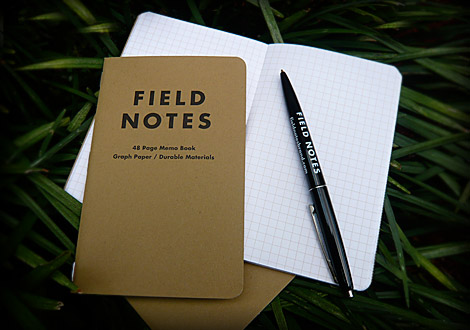Creative Writing 101
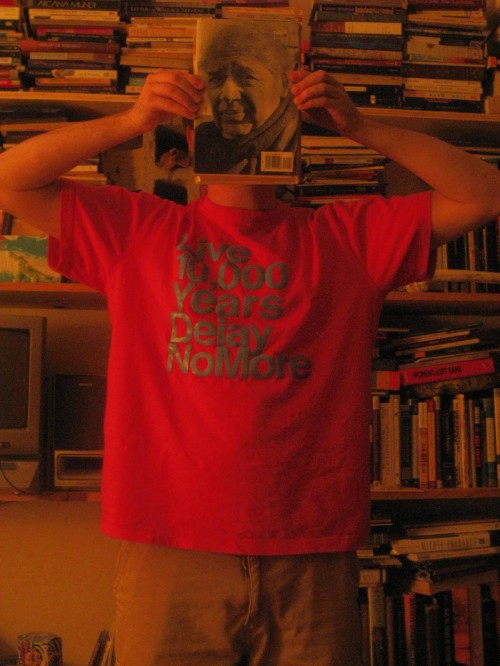
This semester I’m teaching an undergraduate survey of creative writing at Rutgers. We’re two class meetings in, the students are all excited and smart and engaged. They’re making it a real pleasure to show up to class, which anyone who has ever taught before can tell you is not always the case. Because it’s a survey class, the idea is that we’ll look at the major forms of creative writing–fiction, poetry, drama, and nonfiction. Instead of doing “units” on each of these sections, my hope is to pair pieces from different forms, both oriented by a theme or element of craft, themselves relatable back to a writing exercise, and see what kind of glad serendipities result from the juxtapositions.
Monday morning (early, early morning) craft notes.
httpv://www.youtube.com/watch?v=X9aaS2ipAQ4
The inspirational part of this video for me starts about 2 minutes in.
[Announcer] We spoke to Gerard earlier about his strategy. I’d like you to understand exactly what he thinks.
[Gerard] Hello, I’m Gerard Gordeau. I’m a fighter of Holland. And my discipline is savate, the French boxing. The same like kickboxing, only without knees. I hope that I win the tournament, and I don’t make mistakes.
SPOILER: READ MORE >
I Like Howard Finster A Lot.
httpv://www.youtube.com/watch?v=ERRxtwPDFZc
Howard Finster on why he did what he did:
JC: How did this start?
HF: Well, you know. Like, if you had a place itching up here on your head, Johnny? And the first time you put your hand up here you put your hand where it is—don’t matter where it is, you put your hand on it, you know? And if you was to ask me to scratch it, I wouldn’t know where to look. See, I just had a feeling to build this garden, like you know when you have a feeling right where to scratch.
The other half of the interview after the jump.
READ MORE >
Michael Martone’s Reading List for “American Short Fiction of the 70’s and 80’s”
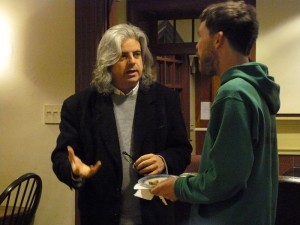
Recently in the comments section of this post, DD mentioned Michael Martone’s workshop reading list. Dear Leader responded by asking for the full list. DD didn’t have the list handy.
So I wrote to him to see if he would share it with us. First, he said his recent workshops don’t have a book list except, “Hyde’s The Gift and a baby name book called Beyond Jennifer and Jason. Also The Mac is Not a Typewriter and sometimes Mr. Wilson’s Cabinet of Wonder.”
But, he teaches a class called American Short Fiction of the 70’s and 80’s, and was happy to share the reading list. It—and more—appear after the jump: READ MORE >
Talking back at quotes on writing
 I came across these nice quotes about writing, and since I can’t talk back at my mother, I figure I would talk back at famous writers. I’d rather get a roll in the grave than a slap in the face. All in fun, and much respect to these writers’ ideas on writing, but it kinda annoys me when people tell others “the final word” on writing, or art, or life in general. What makes Faulkner & Orwell (just a random pair) each so awesome is their completely different approach/goal, thus their completely different audience. I think the same applies to politics and religion, and other stuff people like to fight about. Certain arguments or dialogs are futile — writing just is, and I’m grateful to be able to choose what I read and to enjoy it. I’m happy that we all enjoy words, and that’s about it. Check out the linked quotes, some are really special. After the break is just for fun.
I came across these nice quotes about writing, and since I can’t talk back at my mother, I figure I would talk back at famous writers. I’d rather get a roll in the grave than a slap in the face. All in fun, and much respect to these writers’ ideas on writing, but it kinda annoys me when people tell others “the final word” on writing, or art, or life in general. What makes Faulkner & Orwell (just a random pair) each so awesome is their completely different approach/goal, thus their completely different audience. I think the same applies to politics and religion, and other stuff people like to fight about. Certain arguments or dialogs are futile — writing just is, and I’m grateful to be able to choose what I read and to enjoy it. I’m happy that we all enjoy words, and that’s about it. Check out the linked quotes, some are really special. After the break is just for fun.
Everything all at once: As a Friend by Forrest Gander
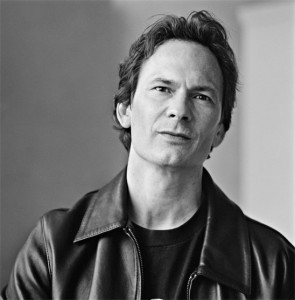 I’ve been struggling for a while to put into words what I think is going on in the third section of Forrest Gander‘s slim, remarkable novel As a Friend.
I’ve been struggling for a while to put into words what I think is going on in the third section of Forrest Gander‘s slim, remarkable novel As a Friend.
The book is broken into four sections. In section one, Les—the book’s subject—is born. In section two, Clay—a friend—talks about the events that led up to his betrayal of Les. In section four, we read comments made by Les, outtakes from a film someone was making about him.
The birth section is an overture—character comes to life and book comes to life at the same time. A moment on the book’s timeline and its consequences.
The Clay section is a look at this remarkable person. Les is a land surveyor and a poet. He is an out-sized individual. Clay is gives readers a longer timeline—Les over the years Clay knew him. It’s also past tense. Clay has some perspective on Les’s life and his death. (Les commits suicide after Clay betrays him by telling Les’s wife about his relationship with another woman.) READ MORE >
Late Night Synthesizer
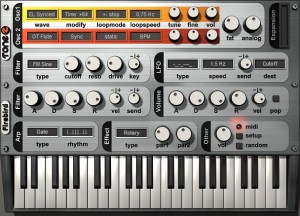 It’s nearly midnight here in Seattle and it’s time for me to do a little synthesizin’.
It’s nearly midnight here in Seattle and it’s time for me to do a little synthesizin’.
how important are physcial descriptions of characters and do they ever work? it seems like whenever someone describes a character, i have less of an understanding of what they look like. and when someone doesn’t describe the character, i just supplement with my own understanding.
Five days later, Blake wrote a little piece about Joe Brainard’s book I Remember.
About 22 pages into I Remember is this section:
I remember Anne Kepler. She played the flute. I remember her straight shoulders. I remember her large eyes. Her slightly roman nose. And her full lips. I remember an oil painting I did of her playing the flute. Several years ago she died in a fire giving a flute concert at a children’s home in Brooklyn. All the children were saved. There was something about her like white marble.
I liked that little piece and made a little mental note of it. But what I like about it is not Brainard’s description of her face. It’s this: “There was something about her like white marble.” It’s an intangible description of her physicality. It allows the active imaginative participation of the reader in a way that asking us to imagine her “slightly roman nose” doesn’t.
I’m all for a bit of physical description, don’t get me wrong. But I prefer that last bit. I prefer a description that includes the individual’s demeanor beyond the strictly physical. “Something about her like white marble,” might be about how pale she is. It might be about her face and neck being free of blemish. It might just be about the passivity of her face. Her stoicism. It might be about her posture. The way she looks at you. The way she ignores you.
What We Talk About When We Try To Talk About What To Call The Stuff We Write: Notes Toward an Answer to Sam Pink’s Question from Yesterday
>>is there any definable characteristic that separates what is called “flash fiction” from what is called “short story” or “novella” or “novel.”<< (click thru for Sam’s whole post)
When I was younger I was obsessed with word-counts. I always wanted to know how long a book was “supposed” to be. No writer I have ever asked about this has ever wanted to give a straight answer to this question. I used to think it was because they were fussy and protective over their secrets, but now that I am older and wiser I understand that it is because they don’t actually know. Nobody does. When Amazon put in that feature with all the book stats, it was one of the happiest days of my life. I spent hours looking up every book I could think of, to see how long they all were. A few months ago, when I switched to a Mac, I was delighted to learn the Pages gives me a running word-count at the bottom of the work-window, and that if I highlight a section of text, I instantly get the word-count for that section. (This blog-window does the same thing, btw.)
But many years before the machines came to the rescue, there was one man who attempted to give me the answers I sought. READ MORE >
thinking about “flash fiction”
is there any definable characteristic that separates what is called “flash fiction” from what is called “short story” or “novella” or “novel.”
i read this story and wondered that.
Home Alone by Raymond Carver
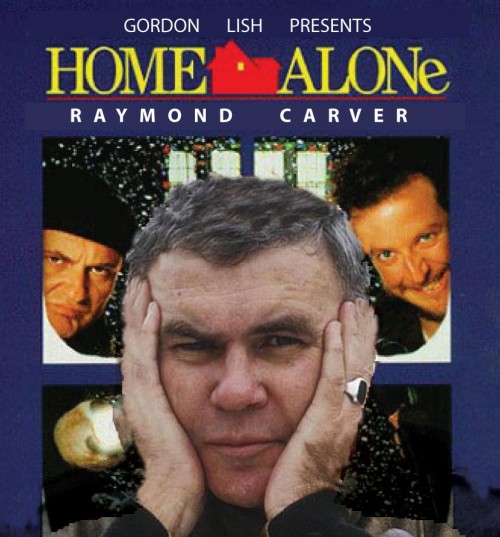
I was standing in front of the living room window, my reflection half transparent, drinking a gin and tonic. My family had left me alone for the holidays; I just didn’t feel up for the motions and devotions necessary to complete the season. That was the thing with years: there were always more. My face through the window seemed lakelike; each squint, as I tried to make myself out, a little ripple moving outwards towards the world at large. The failed hail of snow had fallen. Two men knocked on the door and I started to run away.
That was mine, yah, sorry. Now it’s your turn to give it a go in the comments section — nothing too long, just a couple of sentences. Others are welcome to critique entrees; why is it or isn’t it Carver? Let’s try to find out what it was he* did, and how he* did it. (*Yah, Lish, I know.) For me, Carver is romantic without being romantic. It’s reticent emotional hyperbole, which is like, uh, really difficult. Good luck!

